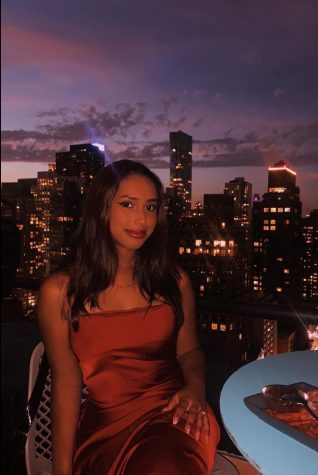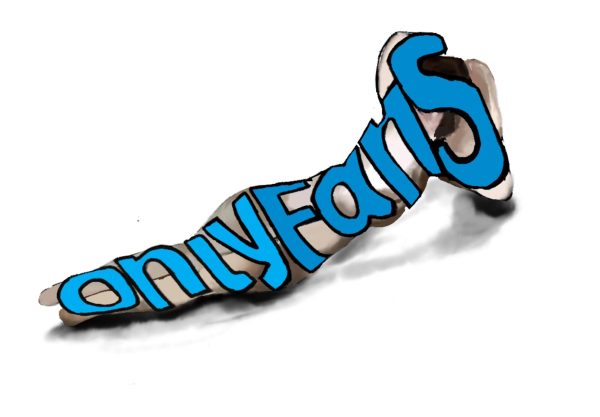Tribute or Tokenism?
What movie comes to mind when I ask you for an absolute must-watch classic? The Notebook? Jaws? The Karate Kid? Notice how none of these so-called “classic” movies have any LGBTQ+ representation at all. But nowadays it seems like there is always at least one gay character in every movie or TV show. Sure, you could say that screenwriters have realized the importance of inclusion, or is it all virtue signalling?
Often, the gay characters are portrayed as comedic relief and lack any other personality trait other than their sexual orientation. Focussing on TV shows, a stellar example of this is in Friends – everyone’s favorite from the ’90s. At first glance, it’s a light-hearted sitcom that delves into the lives of six young adults living in New York City.
However, after digging deeper, it is not that difficult to see the blatant homophobia that acts as a running joke throughout the show. Immediately in the first few episodes the rest of the characters taunt Ross about how his wife Carol left him for another woman. Of course, having some sort of lesbian representation was a huge step in the right direction in the 1990s, but Carol and her girlfriend Susan’s plotline was awful. Even if they were just supporting characters, their sole purpose was to be gay and threaten Ross’s masculinity.
Having Carol leave Ross for a woman, left him feeling emasculated and fragile, which gives the impression that Carol’s sexual orientation was something to be afraid of. Ross even admits that he should have known Carol was gay because “she drank beer from the can” in the very first episode. When I first watched this show, I was too young to fully understand the stereotypical jokes about lesbians. Rewatching it now, they are so easy to detect.
Some movies and TV shows actually have interesting plotlines for LGBTQ+ characters but include harmful stereotypes. Introduced in 2009, Modern Family easily became one of the most popular and successful sitcoms earning massive ratings. I admit it is a wonderful show with many great aspects. However, despite having positive representations of gay men, lesbians are berated constantly in dialogues between Cam and Mitchell.
For example, in the episode “Schooled”, Cam and Mitchell have lunch with a lesbian couple because their kids go to the same school. Cam assumes that these women have traditionally masculine jobs, and even goes so far as to say that they’re vegetarians just because they’re lesbians. Naturally, making the gay character say this is supposed to pass the comments off as light hearted jokes; but either way, these stereotypes can be extremely damaging to the LGBTQ+ community.
Even though the mainstream representation of gay people is largely flawed, at least there is some representation to start with. However, there is a strong absence of transgender main characters, which has caused a lot of uproar in recent years – and rightly so.
It is for this exact reason that when Euphoria came out in 2018, it was highly praised as “one of the most groundbreaking LGBTQ shows on television”. The show is narrated by Rue, a teenage girl who has just come out of rehab for drug addiction. Each episode focuses on a different character in the high school of the small town that Rue lives in. As there are only eight episodes, each one goes into immense detail about each of the characters.
The new girl, Jules, is a young transgender woman who immediately befriends Rue. Jules’ transition journey is shown in one of the episodes, expressing how Jules felt uncomfortable as a boy from a young age. In addition to transgender representation, the show also tackles complex portrayals of queerness, especially in the stereotypical “jock” character Nate and his hypermasculine father. The show not only has an interesting storyline, but also teaches the audience the dangers of repression and how teenagers can deal with their sexuality and gender identity.
What would it look like to live in a world rid of social constructs to determine what makes an “acceptable” romance? Euphoria perfectly answers this question: “it’s a place where people fall in love with those who make them feel safe, comfortable, and cared for – regardless of gender.
The question is: how can screenwriters and producers include excellent LGBTQ+ representation? The answer is simple really. The message of diversity and inclusion should convey that all members of the LGBTQ+ community are valid. Other identities that fall under the queer umbrella such as non-binary, asexual, and gender fluid are rarely seen in the media. We must recognize the entirety of the LGBTQ+ community, not just a few identities. It seems to be a “radical idea” for some, but it is really the bare minimum. No more stereotypes. No more tokenism. 8

Hi! My name is Ayana and I am 18 years old. I enjoy writing opinion articles and I also manage The High's social media @thehighisl - follow us on Instagram...



